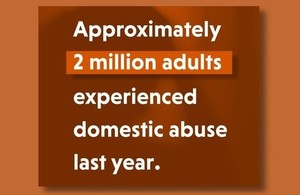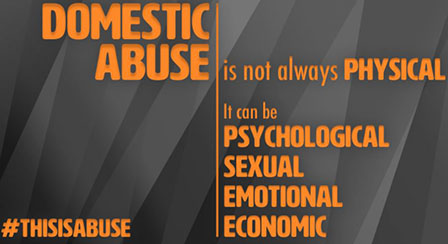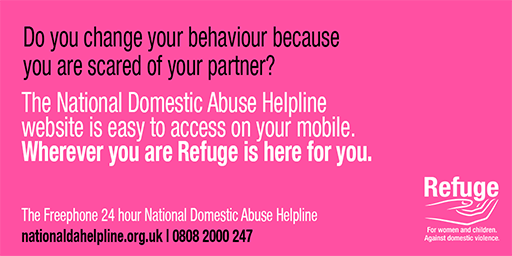1.3 What is domestic abuse?
The above statistic was published by the UK government when it published its draft
However, the first question we have to answer is ‘what is domestic abuse’?
Activity 1
Thinking about your experiences and volunteering, how would you describe domestic abuse?
Comment
There are two elements to domestic abuse.
The first is that it involves domestic, or familial, relationships. We typically think about relationships between current or former partners or spouses, but the government definition is much wider than this. It involves relationships between those aged 16 or over who are or have been intimate partners or family members, regardless of their gender or sexuality. This could involve partners and spouses but also mother, father, son, daughter, brother, sister and grandparents whether directly related, in-laws or step-family. It also includes same sex relationships.
The second element is that it involves abusive behaviours. These can include psychological, physical, sexual, financial or emotional abuse. Usually the abuse is not a one off event or confined to one type of abuse. Continuing abuse in a variety of different forms can have a particularly damaging effect on survivors and their wider family, such as children.
At Support Through Court we use the Home Office definition of domestic abuse, which is widely accepted:
“Any incident or pattern of incidents of controlling, coercive or threatening behaviour, violence or abuse between those aged 16 or over who are or have been intimate partners or family members regardless of gender or sexuality. This can encompass, but is not limited to, the following types of abuse: psychological; physical; sexual; financial; emotional.”
Not all unhappy relationships are abusive. Some couples argue and even fight with each other. What makes a relationship abusive is the intent and effect of the behaviour – the intent of the perpetrator and the effect on the survivor. A common theme in abusive behaviours is the feeling of fear experienced by the survivor.
For example, if a partner suddenly decides to stop doing chores around the house, in a healthy relationship there would almost certainly be a discussion and maybe even an argument between the partners. In an abusive relationship the survivor may acquiesce to the change in behaviour without challenge.
The key difference is fear.
In a healthy relationship there is no fear.
Activity 2
Part 1
Please answer the following multiple-choice questions. There is one correct answer for each question.
a.
A domestic or familial relationship
b.
Convictions for violence
c.
Injuries to the survivor
d.
Threats and coercion
The correct answer is a.
Answer
The correct answer is a domestic, or familial, relationship. The other three circumstances or types of behaviour may be present, but not in every case of domestic abuse.
a.
Violence within a same sex relationship
b.
Controlling behaviour between former partners
c.
Violence between neighbours
d.
Controlling behaviour between a parent and child
The correct answer is c.
Answer
The correct answer is violence between neighbours. This is because they do not have a domestic relationship (intimate partners or family members).
a.
Physical abuse only
b.
Physical and sexual abuse only
c.
Physical, psychological and sexual abuse only
d.
Physical, psychological, sexual, financial and emotional abuse
The correct answer is d.
Answer
The correct answer is physical, psychological, sexual, financial and emotional abuse. Financial and emotional abuse are increasingly recognised as important forms of abusive behaviour, often seen alongside other forms of abuse.
a.
Severity of the violence
b.
Fear
c.
How frequently the abuse occurs
d.
How long the relationship is
The correct answer is b.
Answer
The correct answer is fear. The frequency of violence and severity of violence can be evidence of a pattern of abuse but in isolation they may not always be indicative of an abusive relationship.
1.2 Introduction to the Johnson/Smith family case study



